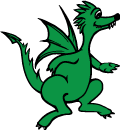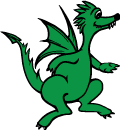
Klasa Segment
Klasa opisująca odcinek. Dziedziczy po Figure. Klasa korzysta z dodatkowej funkcji distance.
Konstruktor
0, 1, 2 albo 4 argumenty.
var Segment = new Segment(). Tworzy odcinek zerowy o współrzędnych P1(0.0, 0.0) oraz P2(0.0, 0.0).
var Segment = new Segment(new Array(new Point(x1,y1), new Point(x2,y2))). Przyjmuje tablicę zawierającą dwa punkty Point. Tworzy odcinek między tymi punktami.
var Segment = new Segment(new Point(x1,y1), new Point(x2,y2)). Przyjmuje dwa punkty Point. Tworzy odcinek między tymi punktami.
var Segment = new Segment(x1, y1, x2, y2). Przyjmuje cztery wspołrzędne dwóch punktów. Tworzy dwa punkty Point i odcinek między tymi punktami.
Właściwości
| Właściwość | Opis | Wartość lub klasa obiektu | Wartość domyślna |
|---|---|---|---|
points |
tablica zawierająca dwa punkty Point tworzące ten odcinek | Array | [] |
Funkcje
| Typ zwracany | Nazwa | Opis | Przykład |
|---|---|---|---|
| liczba rzeczywista | length() |
Oblicza długość tego odcinka. | Rysowanie odcinka |
Segment |
deepclone() |
Tworzy głęboką kopię tego odcinka. | |
Point |
barycenter() |
Zwraca punkt Point będący środkiem (ciężkości) odcinka. | |
void |
draw(context) |
Odrysowuje ten odcinek na kontekście contextpodanym jako argument. |
Listing
var Segment = function() {
this.points = [];
var len = arguments.length;
if (len == 0) {
this.points[0] = new Point(0.0, 0.0);
this.points[1] = new Point(0.0, 0.0);
} else if (len == 1) {
for (var i = 0; i < 2; i++) {
this.points[i] = new Point(arguments[0][i].x, arguments[0][i].y);
}
} else if (len == 2) {
this.points[0] = new Point(arguments[0].x, arguments[0].y);
this.points[1] = new Point(arguments[1].x, arguments[1].y);
} else if (len == 4) {
this.points[0] = new Point(arguments[0], arguments[1]);
this.points[1] = new Point(arguments[2], arguments[3]);
}
};
Segment.prototype = new Figure();
Segment.prototype.length = function() {
return distance(this.points[0], this.points[1]);
}
Segment.prototype.deepclone = function() {
var figure = new Segment();
figure.globalAlpha = this.globalAplpha;
figure.globalCompositeOperation = this.globalCompositeOperation;
figure.strokeStyle = this.strokeStyle;
figure.fillStyle = this.fillStyle;
figure.shadowOffsetX = this.shadowOffsetX;
figure.shadowOffsetY = this.shadowOffsetY;
figure.shadowBlur = this.shadowBlur;
figure.shadowColor = this.shadowColor;
figure.lineWidth = this.lineWidth;
figure.lineCap = this.lineCap;
figure.lineJoin = this.lineJoin;
figure.miterLimit = this.miterLimit;
figure.lineDashOffset = this.lineDashOffset;
figure.lineDashSegments = [];
for(var i=0; i<this.lineDashSegments.length;i++){
figure.lineDashSegments[i] = this.lineDashSegments[i];
}
figure.fill = this.fill;
figure.stroke = this.stroke;
figure.points = [];
for (var i = 0; i < this.points.length; i++) {
figure.points[i] = new Point(this.points[i].x, this.points[i].y);
}
return figure;
};
Segment.prototype.barycenter = function() {
var x = (this.points[0].x + this.points[1].x) / 2.0;
var y = (this.points[0].y + this.points[1].y) / 2.0;
return new Point(x, y);
};
Segment.prototype.draw = function(context) {
context.save();
context.beginPath();
this.setProps(context);
context.moveTo(this.points[0].x, this.points[0].y);
context.lineTo(this.points[1].x, this.points[1].y);
if (this.stroke == true) {
context.stroke();
}
context.restore();
};
function distance(pointA, pointB) {
var a = pointB.x - pointA.x
var b = pointB.y - pointA.y;
return Math.sqrt(a * a + b * b);
};

